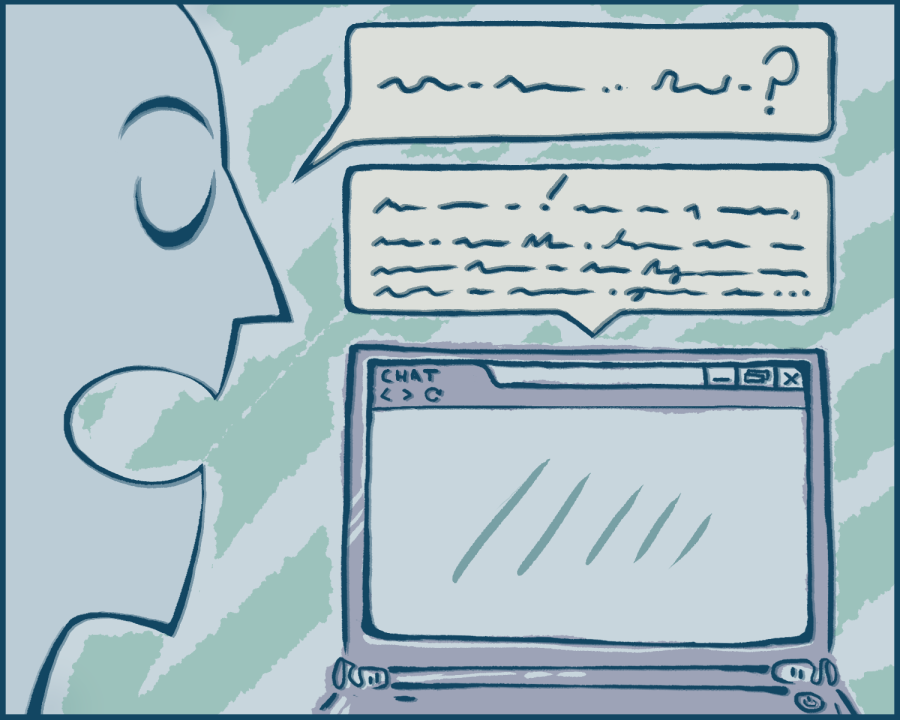‘You Can’t Use It To Plagiarize’: DVC Teachers Prepare to Adapt to Life with ChatGPT
Students have abundant resources at their fingertips with the new technologies available to them, some of which can pose threats to teachers concerned about their students cheating on papers or exams.
Now, the new generative conversational chatbot ChatGPT is raising fears of new-era plagiarism in schools across the country—but surprisingly, many instructors at Diablo Valley College don’t seem all that worried.
“I hope [students] use it,” said John Fogli, a business professor at DVC. “I think it’s a tool. I think we should embrace it.”
OpenAI, an artificial intelligence research lab founded in 2015 and funded by Microsoft, released ChatGPT in November, making this the first full-length school term that it’s available.
Like other chatbots we’ve become familiar with, ChatGPT is trained to understand and respond to users’ questions or requests. But in this case, its technical and creative abilities far exceed any machine invented to date.
Users can ask ChatGPT to generate informative, knowledgeable text about seemingly any types of prompts they want. Unfortunately for educators, this applies to whatever essay topics they assign students in class.
In a sense, the chatbot takes the risk of plagiarism on the college campus to a new level.
“I wrote a whole essay with ChatGPT last semester,” said one DVC student who requested anonymity. “You just type in the prompt and it spits out almost everything you need.”
Yet instead of introducing preventive measures or bans on the use of the app in class, some teachers are preparing themselves in a different way—by welcoming it.
“I actually logged in and created an account,” said Fogli. “It’s not going away, so you have to think about how you’re going to use it.”
Dr. Sangha Niyogi, a professor of sociology at DVC, had similar views about the way the chatbot could be used in school.
“I think it has enormous potential,” Niyogi said. “As a teacher, I would like to be proactive with it.”
OpenAI’s website claims the company’s goal is “to make AI systems more natural and safe to interact with.” But ChatGPT’s developers appear aware of some of its drawbacks as well, admitting the bot can produce harmful instructions, biased content and incorrect information.
Even those teachers intrigued by the technology’s ability to generate written material express some reservations.
“My main worry is when everything is quickly available, we don’t necessarily engage with the material, find our sources, build our analysis,” Niyogi added.
“It’s not conducive to deep thinking.”
Fogli, who referred to ChatGPT as “Google on steroids,” said he plans to tell his students, “You can’t use it to plagiarize. You can use it to get information.”
Yet distinguishing between the two is no longer easy. As the anonymous, previously quoted student said about using the app: “It feels like cheating but it’s not like I’m stealing anybody’s work.”
According to DVC’s Academic Integrity Policy, plagiarism constitutes “representing someone else’s words, ideas, artistry, or data as one’s own, including copying another person’s work without appropriate referencing, presenting someone else’s opinions as theories as one’s own, or working jointly on a project, then submitting as one’s own.”
As society ventures into an unknown future of artificial intelligence, many say technology like ChatGPT is forcing schools to take a closer look at whether they need to monitor—or even potentially censor—these types of tools being used in the campus environment.
But whether such a response will even be possible has yet to be seen.
With many schools across the country already banning the new form of AI because of the possibility that students will use it unethically, Fogli foresees schools going a different direction.
“If I have AI built into my Canvas system, I can teach ten classes,” he said.
Fogli predicts the use and development of chatbots will heavily affect the way community colleges run in the future.
“You can have less tenured professors, which would cost less for the state. And that’s where I see it headed.”
(Illustration by Ericka Carranza)





































































